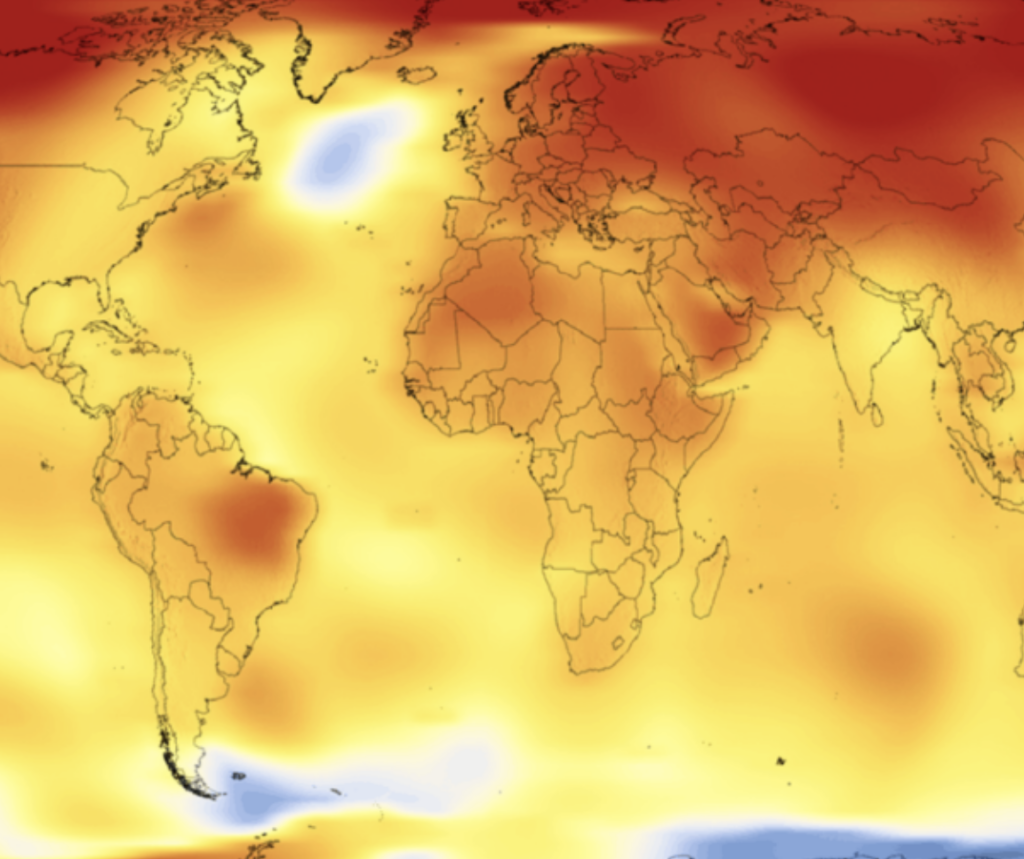This week, scientists have reported that Earth has breached the 2c threshold for the first time. While this is a temporary blip, it does not paint a good picture of the fight against climate change. On Friday, 17th November, the global average temperature was 2.06c higher than pre-industrialised levels for the first time since records began. This was preliminary data reported from the European Center for Medium-Range Weather Forecasts. While this may be a ‘blip’, around 33% of days in 2023 saw the average global temperature being at least 1.5C higher than pre-industrial levels – and that figure was quoted in October. So this figure may be higher now we are close to the end of November.

Although the 2.06c breach was only temporary, for now, it breaches the Paris Agreement threshold, which has set a limit of 1.5c global temperature increase above pre-industrialised levels.
A report from the UN suggests that we are heading towards a global temperature increase of 2.9c. While this may not seem an excessive increase to those who are not familiar with climate change statistics, such a temperature increase will spell disaster on a global scale.
Problems could include the flooding of coastal cities, increased risk of failing crops, unprecedented heatwaves, increases in cyclones and other extreme weather systems, not to mention irreversible damage to our world’s biodiversity.
Reaching The Paris Agreement Target:
We need to cut emissions by 42% in the next six years if we are to keep within the confines of the Paris Agreement, the UN Environment Programme’s Emissions Gap report suggests.
COP28 is set to begin in Dubai next week, where more urgent discussions on lowering global emissions will be taking place. In 2015, COP21 took place in Paris. It was then the world agreed to limit global warming to 1.5°C above pre-industrial levels by 2050 (The Paris Agreement).
The world is now warmer than at any time in the past 125,000 years.
But it’s not all bad. A UN Climate Report argues that exceeding the 1.5C global temperature increase will not be the end of the world as this “may” only be a “temporary overshoot”. The authors of this report do offer optimism that if rapid and lasting changes, such as significant falls in the price of solar and wind energy and a mass move to low-carbon transport, perhaps we could then reach the optimistic target of lowering emissions by 42% within six years.
Can burning wood help lower global emissions?
Despite misleading information in some media outlets, burning firewood, if done so correctly, is highly environmentally friendly and sustainable as long as:

1. You’re sourcing wood from sustainable woodlands
2. You’re burning seasoned wood
3. You’re burning this seasoned wood on an Ecodesign stove
Woodlands MUST be sustainable. Here are a few key facts about woodlands and forests:
1. Forests cover around 30% of the world’s land area
2. Forests contain most of the world’s biodiversity and almost as much carbon as in the atmosphere
3. Directly and indirectly, forests and woodlands provide livelihoods for over one billion people
4. Forests influence the availability of water, regulate surface and groundwater flows, and also help maintain high water quality
5. Forests and trees reduce water-related risks such as landslides, floods and droughts.
View our range of wood-burning stoves here.








